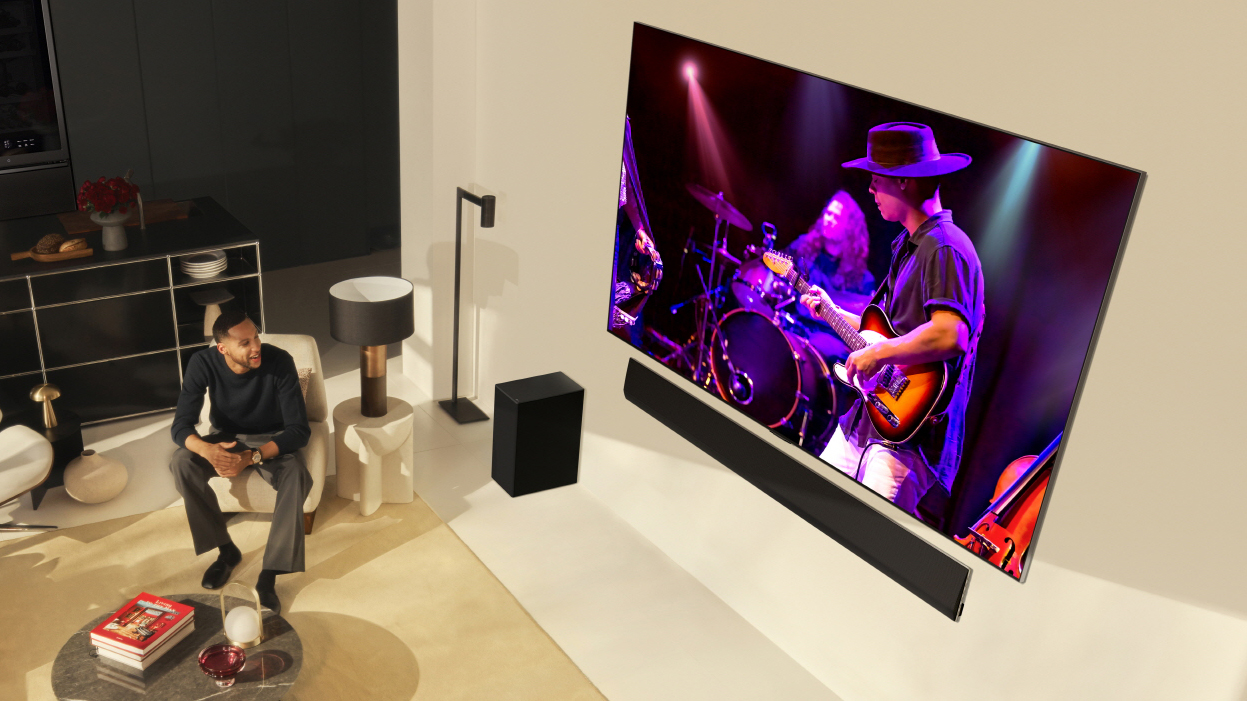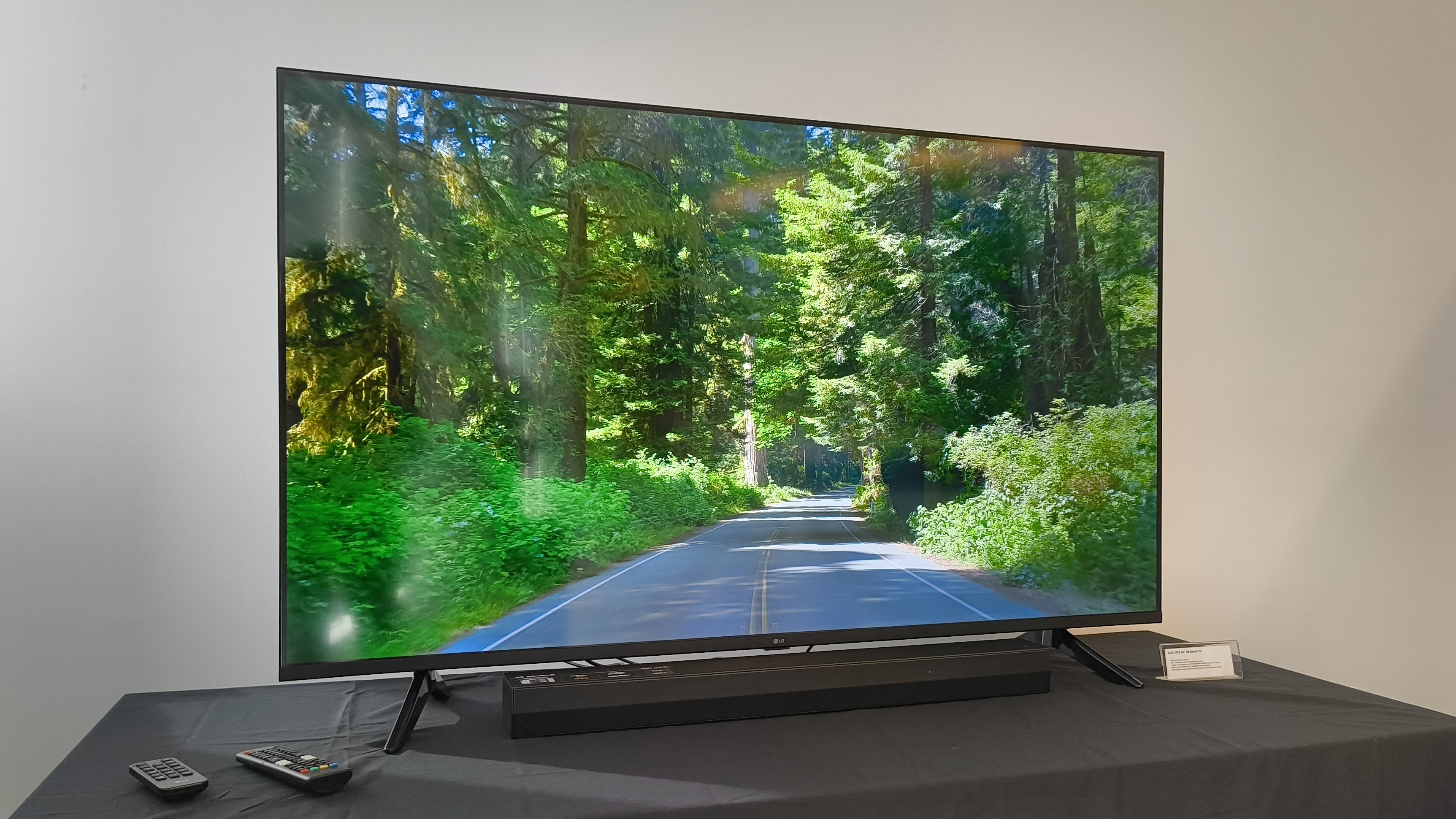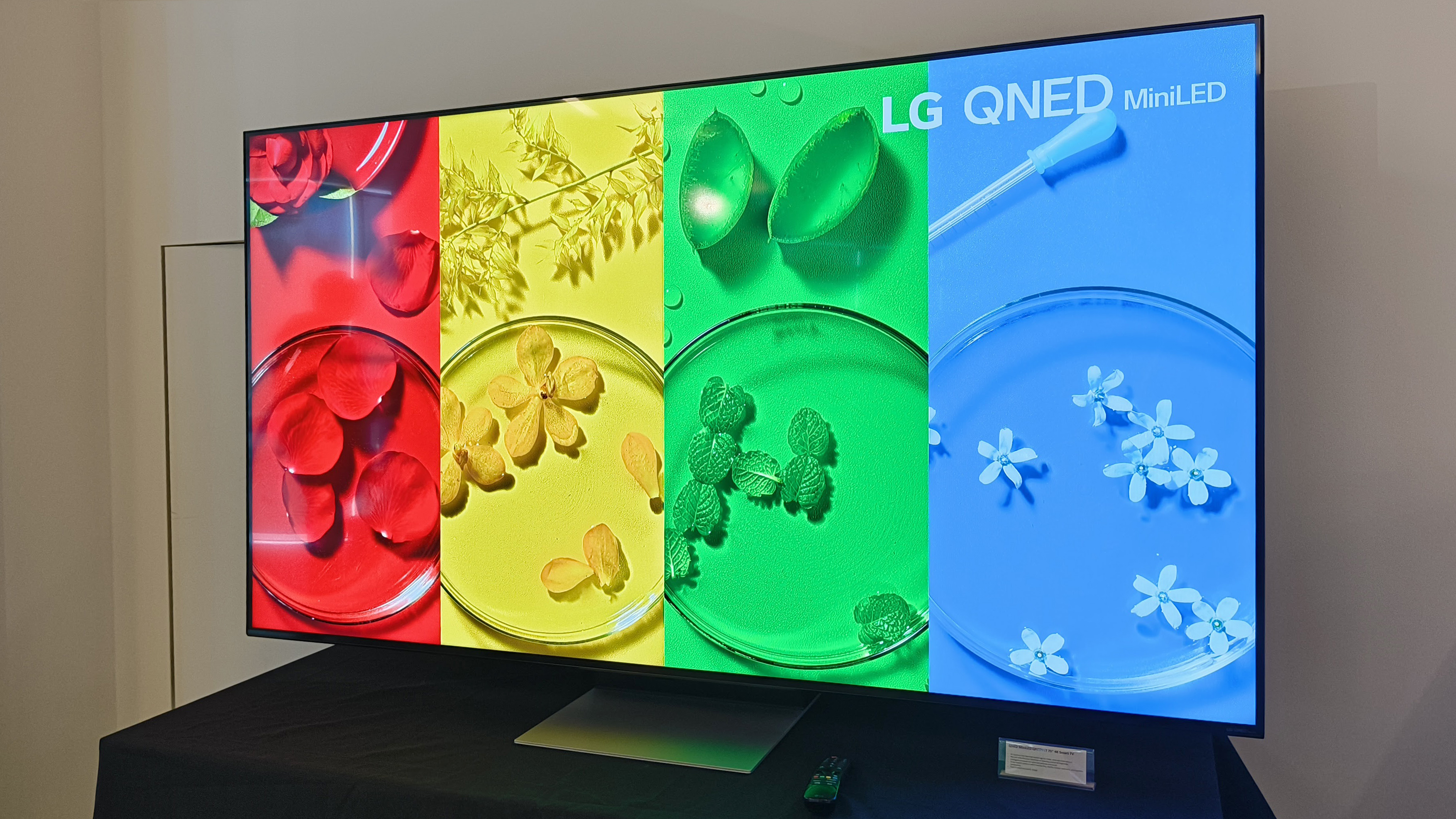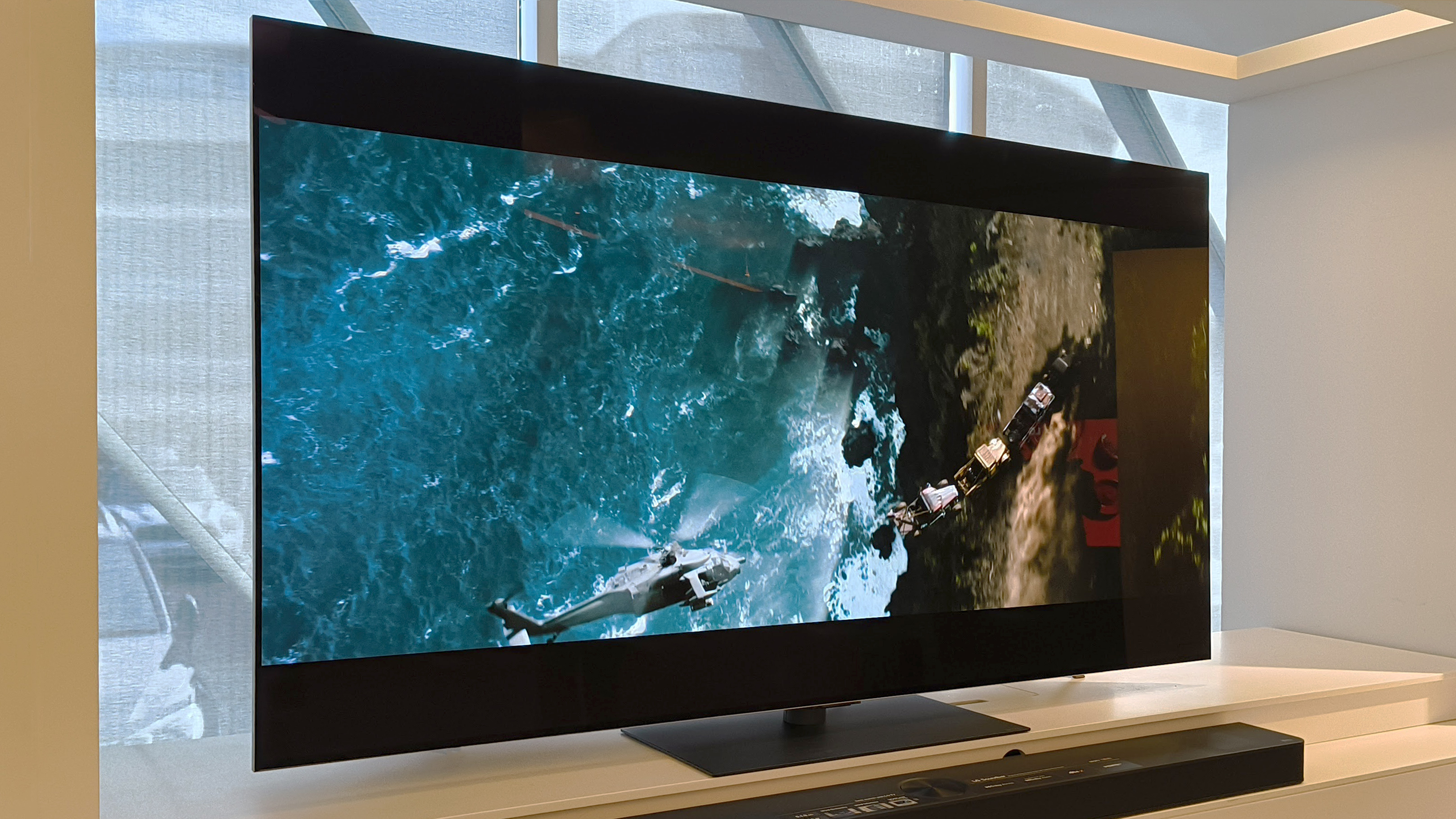
When you're shopping for one of the best TVs there's lots to consider. And when you land on a manufacturer's webpage and see a sea of letters and numbers per product, it can be a bit overwhelming. Having spent a day at LG HQ in the UK, however, I'm here to break down the brand's 2024 4K-resolution television range so you know what you're getting for your cash.
LG is largely known for making the best OLED TVs, which you'll find at the top of its range (and further down this particular article), but the company also makes comparable Quantum Dot sets (which it calls QNED, whereas Samsung prefers QLED), and cheaper LCD panels at the bottom of its range. All have their place and, crucially, will fit varying budgets. So let's get to it...
LG LCD TVs 2024

If you're after a more affordable TV but don't necessarily wish to compromise on size then the UT range is fitting. These are LCD panels.
The 'T' represents a 2024 release date. The 'U' is the model number (so previous models will be 'UR', for example, compared to 'UT' of this year's range).
LG UT73, UT81, UT91
- UT73: 43in, 50in, 55in, 65in
- UT80 / UT81: 43in, 50in, 55in, 65in, 75in
- UT91: 43in, 50in, 55in, 65in, 75in
At the bottom of the range is the LG UT73, which is an LCD panel and doesn't feature local dimming from its LED backlight illumination. It's this dimming technology that can stop 'light bleed' around light subjects on dark backgrounds, by 'zoning'. Without it you're not going to get the best picture quality, ultimately, but what you do get is an affordable option available in four different sizes.
Step up to the UT80 or UT81 and the design is slimmed down, while a Magic Remote is included in the box to make for easier point-at-screen use. The picture quality will be the same from the generalist LED backlight, it's the design and peripherals that are the step up here.
A notch above this is the UT91, which adds a height-adjustable stand to the above but, most importantly, there is local dimming – the edge-illumination means you can can expect slightly better control of light-on-dark subjects. It's not going to be a picture master, however, as control over these limited zones is limited, but it's the best of the lower-priced range for 2024.
Get all the latest news, reviews, deals and buying guides on gorgeous tech, home and active products from the T3 experts
LG QNED TVs 2024

QNED is a Quantum Dot technology with added LG NanoCell layer to adsorb excess light and maintain better contrast. Quantum Dots upgrade traditional LCD colour filtration by using smaller-scale 'dots' that can produce broader and brighter colour ranges.
As with the LCD series, the 'T' represents a 2024 release. Previous models' product numbers differ depending on region and release date.
LG QNED80T, QNED85T, QNED91T
- QNED80T: 43in, 50in, 55in, 65in, 75in, 86in
- QNED85T: 50in, 55in, 65in, 75in, 86in, 98in
- QNED91T: 65in, 75in, 86in
The entry-level QNED panel for 2024 is the 80T, which features a 60Hz panel (as do all the previous entries in this list).
The step-up is the QNED85T, which adds the Alpha 8 processor, meaning it's capable of 120Hz refresh rate, including VRR (Variable Refresh Rate) that gamers will love.
Above this is the QNED91T, which introduces Mini LED backlighting to the 120Hz panel. As the name suggests, these are much smaller than traditional LEDs, which provides greater control and accuracy in its illumination. There's also Dolby Vision HDR and Dolby Atmos compatibility out of the box, which lacks in any set below this benchmark.
LG OLED TVs 2024

This is where things step up to a more 'pro' level, as OLED is fundamentally different to LCD (and therefore QNED) panels. Organic Light Emitting Diode is what it stands for and each 'pixel' is able to self-illuminate for pixel-perfect contrast control without the need for backside or edge illumination.
Unlike the LCD and QNED models' product codes, the OLED series starts at B, moving to C, then G (this no longer being wall-mount only, but offering 'W' wall-mount or 'S' stand-mount options), before reaching M (which is wireless), and T (which is translucent).
LG OLED B4, OLED C4, OLED G4
- OLED B4: 48in, 55in, 65in, 77in
- OLED C4: 42in, 48in, 55in, 65in, 77in, 83in
- OLED G4: 55in, 65in, 77in, 83in, 97in
The opener in the OLED series (as an OLED A4 won't exist in the UK or most territories, far as I understand) is the OLED B4, complete with the Aplha 8 processor and a 120Hz panel. There's a new 48-inch model that was absent in last year's OLED B3 line-up. Otherwise things are pretty similar, bar for one significant upgrade – all four ports are HDMI 2.1, which is great for gamers.
Stepping up a level is the OLED C4 (which is largely similar to the OLED C3 of last year), which upgrades to the Alpha 9 processor and can offer future-proofed 144Hz in gaming mode. Other than those differences the crucial addition of an Evo panel means the C4's 'Brightness Booster' tech is brighter than the B4. Both C4 and B4 feature 9.1.2 channel virtual surround too.
Largely considered as the champion model of the LG OLED range is the OLED G4. This year, however, there will be 'W' wall-mount and 'S' stand-mount options, meaning you can pick the option that will best suit your needs. The G4 features the new Alpha 11 processor, which is able to apply even more artificial intelligence processing, 11.1.2 channel virtual surround sound, and again 144Hz refresh. The big sell of the G4, however, is its MLA panel with Brightness Booster Max technology means it's the brightest in LG's range.
LG OLED M4, OLED T
- OLED M4: 65in, 77in, 83in, 97in
- OLED T: 77in only
I've subcategorised the M and T models as they're altogether more specialist. The OLED M4 is identical to the G4 in all ways, except it comes as wall-mount only and has a Zero Connect Box separate for the HDMI connections – which is can transmit to the TV (up to 10 metres) wirelessly and in lossless formats. The only cable you need worry about is a power cable to the set itself.
Beyond this is the OLED T, which is a 77-inch only model and a transparent screen. It's less bright, will come in a yet-to-be-finalised 'contained' design and when I saw it at the CES 2024 show was very impressed. It'll probably cost a fortune though, so will be more proof of concept for most people.

Mike is T3's Tech Editor. He's been writing about consumer technology for 15 years and his beat covers phones – of which he's seen hundreds of handsets over the years – laptops, gaming, TV & audio, and more. There's little consumer tech he's not had a hand at trying, and with extensive commissioning and editing experience, he knows the industry inside out. As the former Reviews Editor at Pocket-lint for 10 years where he furthered his knowledge and expertise, whilst writing about literally thousands of products, he's also provided work for publications such as Wired, The Guardian, Metro, and more.
